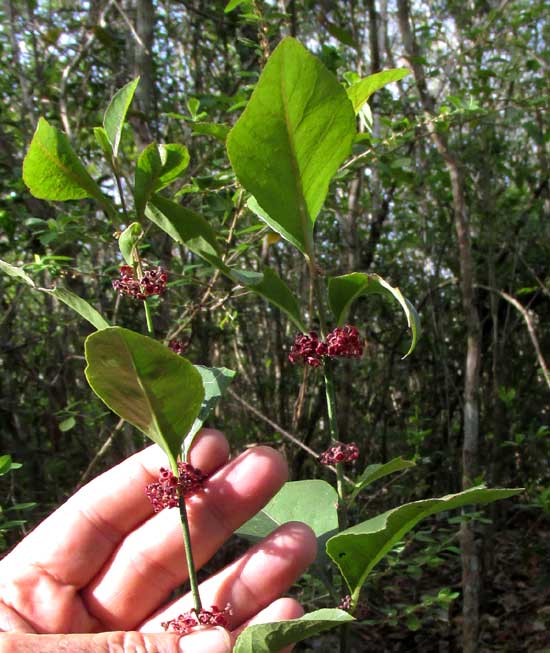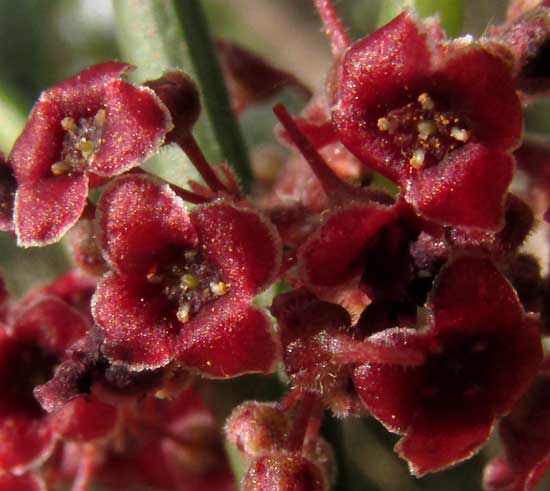Excerpts from Jim Conrad's
Naturalist Newsletter
from the June 12, 2016 Newsletter issued from Hacienda Chichen Resort beside Chichín Itzá Ruins; limestone bedrock; elevation ~39m (~128ft), N20.675°, W88.569°; central Yucatán state, MÉXICO
CROSSOPETALUM BUSH
In late March I photographed a spindly, green-stemmed, knee-high bush along a forest trail that, despite its bearing dense, handsome clusters of small flowers, I simply was unable to identify, and therefore never told you about it. I saved the pictures, though, and below you can see what it looked like in late March when the forest wasn't as dry-season parched as now:

Flowers with four stamens and petals are shown below:

This week as I was discovering for myself the genus Crossopetalum, it occurred to me that our March mystery bush was somewhat similar. In fact, the March plant turns out to be a second species of Crossopetalum, CROSSOPETALUM GAUMERI, endemic just to the Yucatan Peninsula south to Honduras.
I should have recognized this back in March, for the flower close-up clearly shows that the bottom of each flower is covered with a fleshy disc, exactly as with our northern Euonymus species, plus the green stems are somewhat four-angled as well. I just couldnt visualize a member of the Staff-tree Family, or Celastraceae, down here, much less one with maroon flowers.
Ignorance blinds us, sometimes it's been said.
from the July 31, 2016 Newsletter issued from Hacienda Chichen Resort beside Chichín Itzá Ruins; limestone bedrock; elevation ~39m (~128ft), N20.675°, W88.569°; central Yucatán state, MÉXICO
CROSSOPETALUM BUSH IN FRUIT
This week I found the very same plant profiled above, now bearing striking red fruits, shown below:

If you compare that picture with the earlier ones of the plant bearing flowers, you can even recognize the same leaves in each picture.